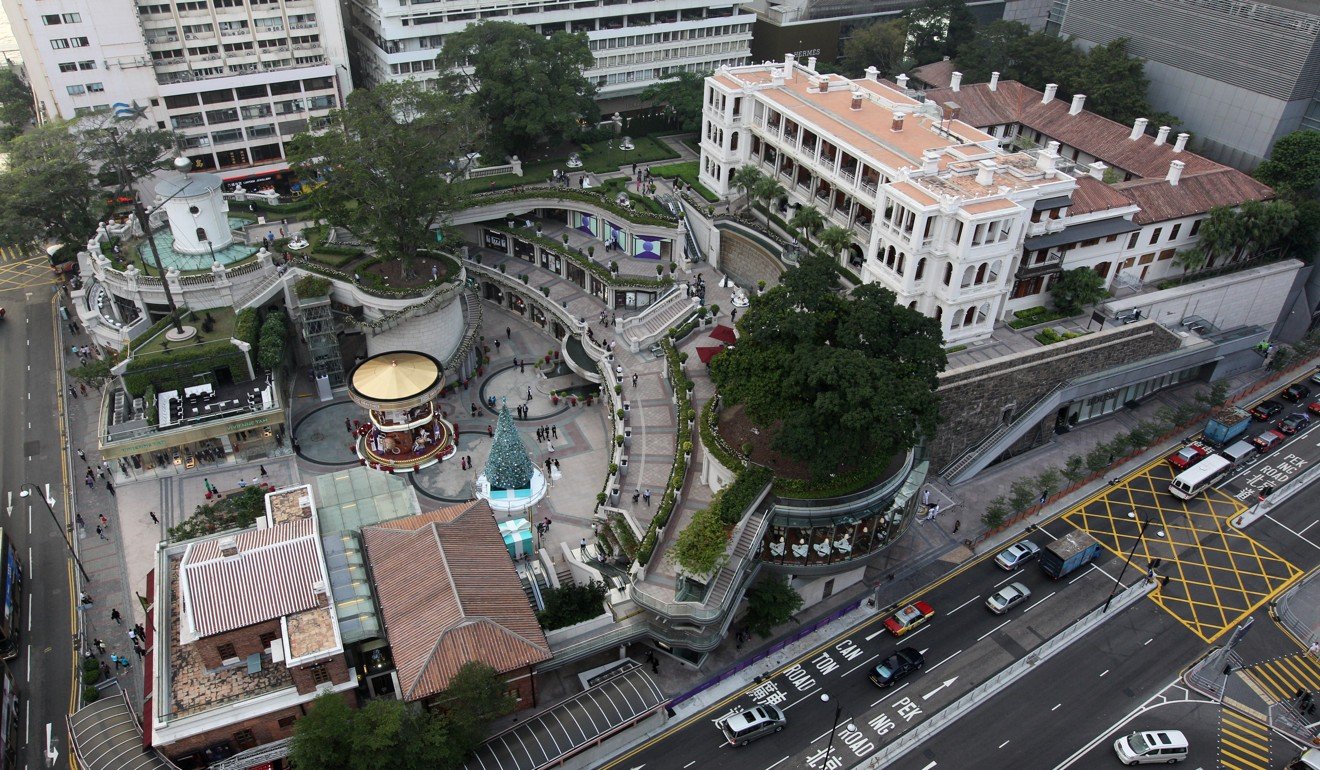
Historic Hong Kong banyan tree toppled by Typhoon Mangkhut permanently removed from site at city hotel
Government demands full report into removal of 100-year-old tree, which consultant said was hanging over a public place, posing a potential public danger
A century-old tree preserved at a Hong Kong mall but knocked down by Typhoon Mangkhut last week was quietly removed from the property over the weekend, and the government has demanded a full report and explanation.
The managers of the Tsim Sha Tsui luxury hotel and mall 1881 Heritage had been urged by the Lands Department to exhaust all possible means to save the massive Chinese banyan on its land and experts were of the opinion that it was feasible.
However, the tree was removed because it was decided there no means of remedying the damage.
A Post reporter visited the site on Monday and found the collapsed specimen gone from the elevated structure it had been preserved in, the topsoil flattened and cleared of almost all traces.

Removal work began on Saturday morning, staff said, just days after developer CK Asset Holdings confirmed that the tree would be removed if necessary, to ensure public safety.
“They had to remove it; it collapsed and was in a dangerous position,” said one staff member at the mall, pointing to the cordoned off area, its damaged parapet and glass railings still visible. “It was a lot of work and took almost two days to remove all the [sections].”
“It couldn’t be saved,” said another caretaker. “I suppose they might plant another tree in its place, another species probably.”
‘Time running out’ to save historic Hong Kong banyan tree felled by Typhoon Mangkhut
The Lands Department last week appealed to CK Asset to try to save the tree and the latter had also commissioned its contractor to assess the situation.
The department said it had conducted an inspection on Monday and was told by the lot owner’s tree consultant that the tree was hanging over a public place, posing a potential public danger.
“The Lands Department has asked the consultant to provide a thorough report … to justify his decision,” the department said.
The department will follow up on the removal and any replanting proposal.
The appointed landscape architect claimed emergency removal was necessary on public safety grounds, which is allowable, according to the Lands Department.

The tree, which had been at the former marine police headquarters for around 100 years, was one of nearly 17,000 trees which were felled or seriously damaged as the most intense typhoon in the city on record swept by Hong Kong last Sunday.
The tree had been growing on a hill nearby but was replanted in the current structure when the site was redeveloped . The preservation project had cost CK Asset more than HK$1 billion (US$127.5 million).
Hongkongers seek help for stings as bees ‘go crazy’ after Typhoon Mangkhut
A clause in its land lease prohibits the owner from removing or disturbing trees at the site without government approval. Exceptions can be made in cases of public safety, but the owner must submit a report within 21 days.
Professor Jim Chi-yung, a tree expert at Education University, argued that saving the tree was feasible and worthwhile, because its root plate was still intact.
“One can balance the cost of rescue with the intangible value accorded to the tree by virtue of its exceptional historical, heritage, sentimental, ecological, environmental and economic contributions,” Jim said.
He added that the government did not provide a good “role model” to developers to show that it is technically feasible to rescue toppled trees.
CK Asset did not immediately respond to queries on Monday.

